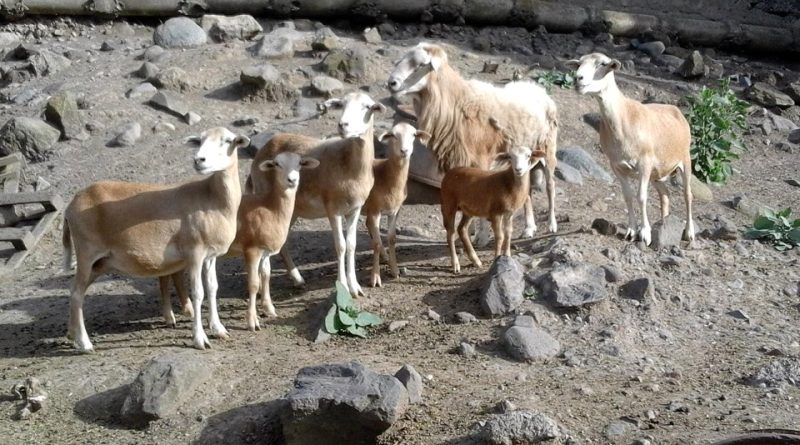Pelibüey
Pelibüey
The Pelibüey (Ovis aries Linnaeus, 1758) is a breed originally from Cuba for meat production.
Systematic –
From a systematic point of view it belongs to:
Eukaryota domain,
Kingdom Animalia,
Phylum Chordata,
Mammalia class,
Order Artiodactyla,
Suborder Ruminantia,
Bovidae family,
Subfamily Caprinae,
Genus Ovis,
Species O. aries,
Pelibuey breed.
Geographic Distribution and Habitat –
The Pelibüey or Cubano Rojo or oveja de pelo canaria is a breed of sheep native to North Africa and the Canary Islands, brought to the Caribbean and Central America by the Spanish.
This breed is found primarily in Cuba, where it is the largest breed of sheep, but is also raised elsewhere in the Caribbean and in some coastal parts of Mexico.
Origins and History –
The Pelibüey breed originates from Africa, from the African dwarf sheep. It was also bred by the indigenous people of the Canary Islands, where it became extinct, until specimens from Venezuela were reintroduced in the 1990s, mainly to consume the remains of banana trees and obtain good manure. Since 2015, its breeding has been strongly rooted in Central America, given that the meat of the adult specimen is similar to that of lamb but with less fat.
The Pelibüey breed probably descends from the West African Dwarf and is likely related to other American breeds of African origin such as the Barbados Black Belly, the Roja Africana of Venezuela and the Oveja Africana of Colombia.
Morphology –
The Pelibüey is a small-sized sheep, with an average weight of 54 kg for males and 34 kg for females.
This breed is characterized by various coat colors, beige, brown, dark brown, red, white, black and roan, both solid and piebald. It is generally hornless.
Its coat is made up of hair and not wool; this is a common adaptation to tropical environments.
Productive attitude –
The Pelibüey is a breed with a productive aptitude mainly for meat.
Lambs weigh approximately 12kg at 120 days of age.
The lack of wool is an adaptation that makes it particularly useful in intertropical regions where woolly sheep do not survive.
It is a breed bred mainly in hot climates for the consumption of its meat and to obtain excellent quality manure.
Guido Bissanti
Sources-
– Wikipedia, the free encyclopedia.
– Balasini Dialma, 2001. Applied zootechnics. Sheep and goats. Sheep and goats. For technical and professional institutes, Caledrini Edagricole, Bologna.
– Daniele Bigi, Alessio Zanon, 2010. Atlas of native breeds. Cattle, horses, sheep, goats, pigs raised in Italy, Edagricole-New Business Media, Bologna.
Photo source:
– https://commons.wikimedia.org/wiki/Category:Pelibuey#/media/File:Pelibueys.jpg

